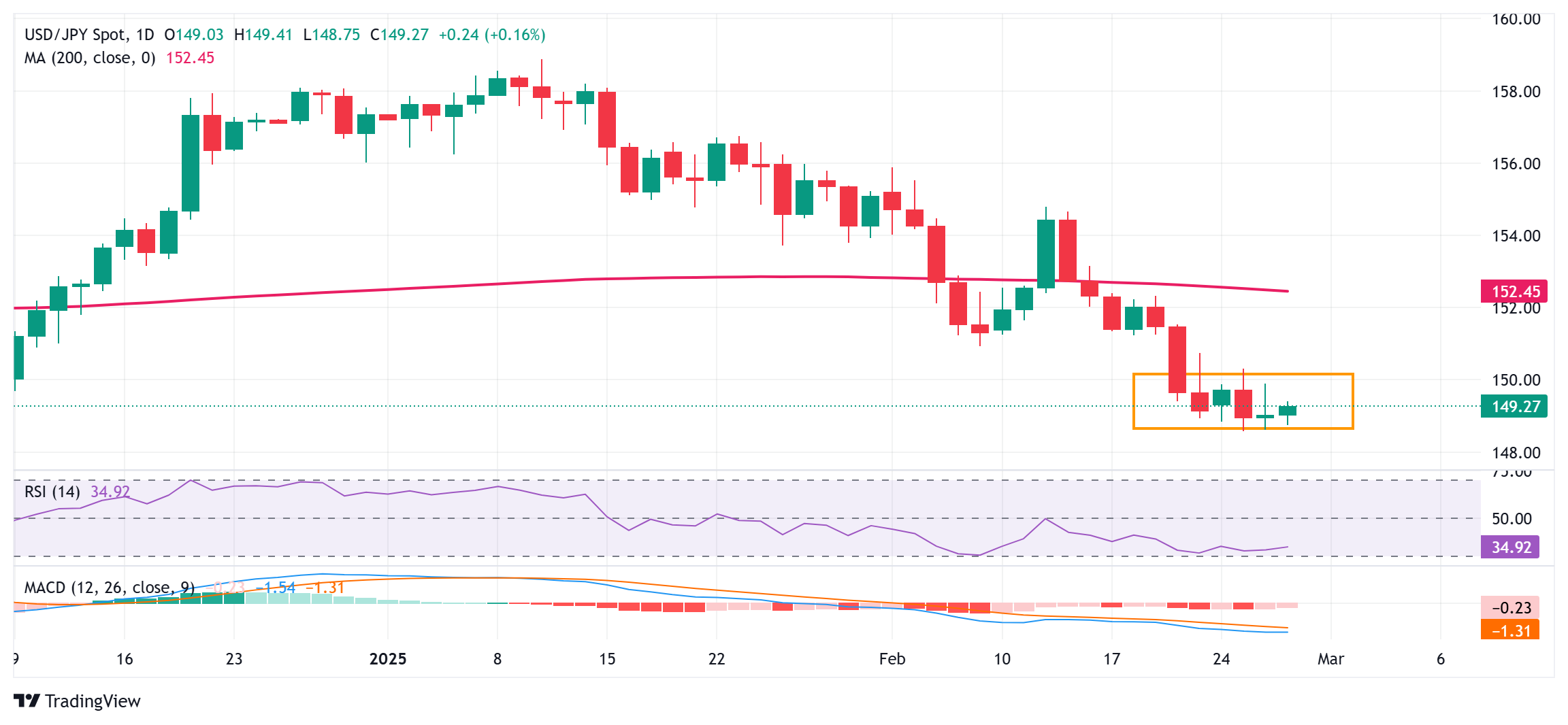The Japanese yen edged lower on Wednesday, with USD/JPY climbing toward 149.50, as a decline in Japanese Government Bond (JGB) yields dampened demand for the currency. The move comes as markets adjust their expectations for the Bank of Japan’s (BoJ) policy stance, with traders weighing whether recent hawkish signals will translate into a shift in monetary policy.
A drop in JGB yields has reduced the appeal of the yen, reinforcing the interest rate divergence between Japan and the United States. While the BoJ has hinted at potential policy normalization, the central bank has yet to commit to any immediate changes, keeping pressure on the yen. Meanwhile, the Federal Reserve’s cautious approach to rate cuts has supported the US dollar, adding further upside momentum to USD/JPY.
The weakening yen comes despite ongoing speculation about potential currency intervention by Japanese authorities. Officials have repeatedly expressed concerns about excessive yen depreciation, but without any immediate action, markets have continued to push USD/JPY higher. Traders remain wary of intervention risks, but for now, the yen remains vulnerable to external market forces.

USD/JPY 1-D Chart as of February 27, 2025 (Source: TradingView)
Adding to the yen’s struggles, global risk sentiment has remained mixed, with investors keeping a close watch on geopolitical developments and economic data releases. While some safe-haven demand exists, the yen has been unable to capitalize on broader market uncertainty as long as Japan’s low interest rate environment persists.
The upcoming US economic data releases, particularly inflation and labor market reports, could further influence USD/JPY’s direction. A stronger-than-expected reading may reinforce the Fed’s reluctance to cut rates, boosting the US dollar and pushing USD/JPY further upward. Conversely, signs of economic cooling in the US could limit dollar gains and provide some relief for the yen.
For now, USD/JPY remains in an upward trend, with traders closely watching central bank signals and bond yield movements. Unless the BoJ takes a firmer stance on policy tightening, the yen is likely to stay under pressure, leaving 149.50 a key level to watch in the near term.













